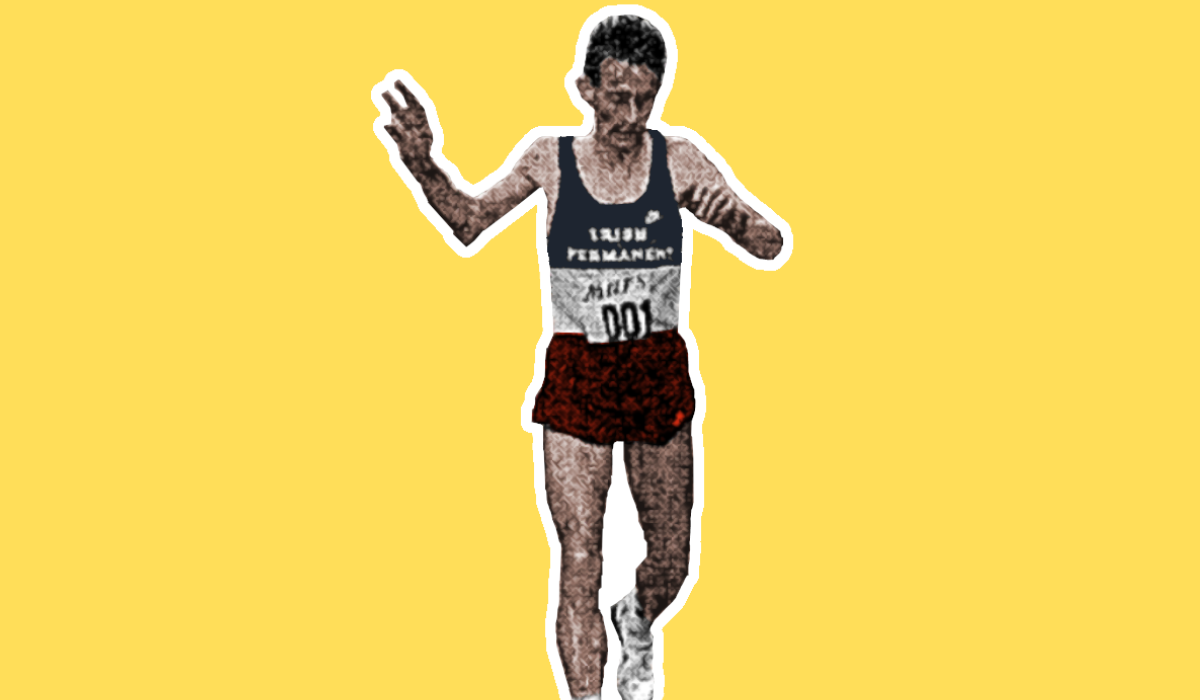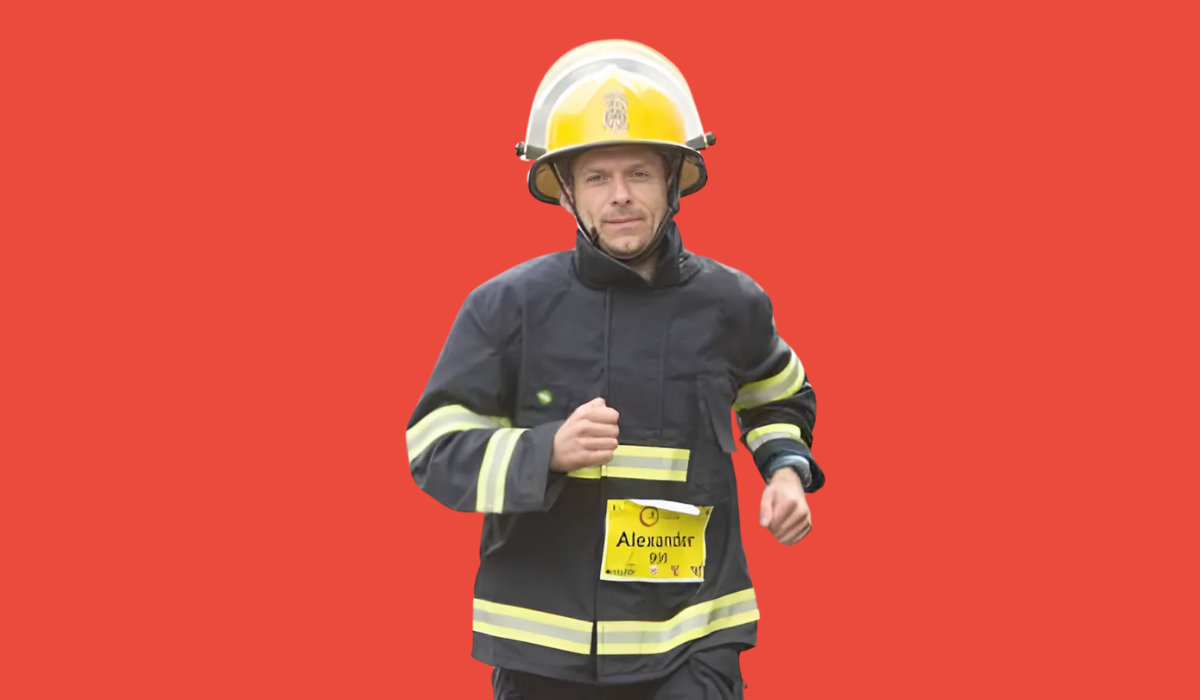Dublin Marathon Memories: The 1986 Race That Cemented Hooper’s Legacy

October 14, 2024

As this year's Dublin Marathon draws ever closer, we continue to look back at some of the unforgettable moments from the race’s history. Few stand taller in the annals of Dublin Marathon lore than Dick Hooper, whose 1986 triumph marked a milestone for Irish athletics. Not only did Hooper become the first runner to win back-to-back Dublin Marathons, but he also remains, to this day, the only athlete to have claimed three titles in the event.
Ireland in 1986: A Nation on the Brink of Change
By 1986, Ireland was starting to feel the winds of change, even if it didn’t always seem obvious at the time. Economically, the country was still in a bad place, with high unemployment and emigration rates dominating headlines. Indeed 31,000 people emigrated from Ireland that year. But beneath the surface, green shoots of progress were beginning to sprout.
That year, a few seemingly small events signalled the transformation that was to come. Jack Charlton took over as manager of the Irish football team, a decision that would eventually lead to one of the greatest periods in Irish sporting history.
Meanwhile, Ryanair took its first flight, paving the way for affordable travel and those famously “relaxed” hand luggage rules we all love today. And, in a quirky twist, Dublin Zoo welcomed two pandas, Ming Ming and Ping Ping, flown in all the way from China for a 100 day visit. A sign of international relations and a lighter note in what could be sometimes characterised as a a gloomy decade.
The city of Dublin, much like the country, was changing, but in 1986, marathon day provided a much needed distraction from everyday concerns. And for one man in particular, it would be a day to remember.
Dick Hooper’s 1986 Victory: Writing History
By the time Dick Hooper lined up for the 1986 Dublin Marathon, he was already a seasoned veteran of the event, having won the inaugural race in 1980 and again in 1985. But this race would present a unique challenge. His goal was not just to win but to make history by becoming the first runner to win back-to-back titles and claim an unprecedented third victory.
The race started in relatively mild conditions, with a field of around 5,000 runners, but it wasn’t long before the complaints about wind started to surface. The early pace reflected the tough conditions, with the first mile taking 5 minutes and 9 seconds, and the next few miles similarly cautious, hovering around 5:20 to 5:30 per mile. At five miles, the leading group clocked 26 minutes and 53 seconds, a pace much slower than expected.
Hooper began to pick up the pace as the runners descended into Harold’s Cross, and only Tony O’Leary of Cork and Moroccan runner Olijab Lahbib could stick with him. However, both eventually faded, leaving Hooper alone at the front with a sizable lead over Belfast’s Martin Deane, a two-time Belfast Marathon winner. By the time Hooper reached the 15-mile mark, he had built up a 41 second advantage over Deane, but the race was far from over.
As the runners crossed the toll bridge and wound their way towards Fairview, Deane began to close the gap. Hooper’s lead shrank to just 30 seconds by the 21-mile mark, and Hooper, battling intense pain and fatigue, admitted later, "At one stage around the 20-mile mark, I promised myself that I would never run another marathon. I was dying on my feet and it was out of pure fear that I never looked behind me."
Deane continued to stalk Hooper for the last 10k but never quite managed to close the gap but never quite managing it. As they approached Raheny, the crowds gave Hooper a much-needed boost, but he still looked far from comfortable. Despite Deane’s relentless pursuit, Hooper’s experience and determination saw him hold on to cross the finish line in 2:18:10, his slowest winning time, but the time was secondary. "My only concern over the last few miles was to keep my act together and ignore everything else," said a visibly relieved Hooper after securing his third Dublin Marathon title.
Deane finished 36 seconds behind in second place, never quite able to bridge the gap, while Eamonn Tierney of Clonliffe Harriers took third in 2:24:49, a full 6 minutes and 39 seconds adrift of Hooper.
The Women’s Race
The women’s event had its own fair share of drama. Maureen Hurst, a 33-year-old English runner, was the favourite to win, but her race took a bizarre turn when she was struck on the leg by an accompanying police motorbike at the 18-mile mark. Despite the collision, Hurst, showing remarkable composure and, soldiered to win the women’s race with a comfortable lead in a time of 2:46:29.
The Man Behind the Wins
Hooper wasn’t just a marathon specialist, he was a stalwart of Irish athletics. Representing Ireland at the 1980, 1984, and 1988 Olympic Games, he competed on the world stage while still making time for the Dublin streets that had become his personal proving ground. His 1986 win was not just a personal triumph, but a moment of national pride. He was, in many ways, the embodiment of what Irish athletics stood for: hard work, humility, and an unshakeable focus on the task at hand.
Despite his international successes, it was his achievements in the Dublin Marathon that secured his legacy. While other have since won back-to-back men’s titles – John Griffin (1988 and 1989), Joshua Kip Kemboi (1997 and 1998), Alexey Sokolov (2006 and 2007), and Geoffrey Ndungu (2011 and 2012), no one has yet matched Hooper’s three wins.
Hooper’s Legacy in the Dublin Marathon
The 1986 race wasn’t just another chapter in Hooper’s running career, it was a moment of enduring legacy. His three victories remain unmatched, and his influence on the Dublin Marathon, and Irish athletics more broadly, is undeniable. His pain, both mental and physical, was evident as he crossed the line. Hooper’s own reflections post-race captured the enormity of his achievement. Despite his exhaustion, he had done what no one else had.
Even today, as new generations of runners take to the streets of Dublin, Hooper’s achievements serve as a reminder of the race’s history and the great Irish athletes who have come before.
Ireland in 1986 was a country poised for change, much like the marathon itself. Jack Charlton’s appointment as Ireland’s football manager would lead to a golden age of Irish football, Ryanair’s arrival would revolutionise travel for the nation, and yes, even the pandas at Dublin Zoo were a sign that the world was starting to look a little different.
But amidst all the change, Hooper’s third victory was a constant, a testament to the power of perseverance. His legacy continues to inspire, and his name will forever be linked to the Dublin Marathon’s storied past.
Image: Adapted from original image by the late Michael Slevin




